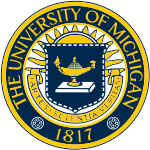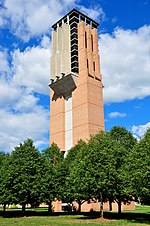Gerald R. Ford Presidential Library
1981 establishments in MichiganBuildings and structures in Ann Arbor, MichiganGerald FordLibraries in MichiganLibrary buildings completed in 1981 ... and 3 more
Museums in Ann Arbor, MichiganPresidential librariesUniversity of Michigan campus

The Gerald R. Ford Presidential Library is a repository located on the north campus of the University of Michigan in Ann Arbor. The library houses archival materials on the life, career, and presidency of Gerald Ford, the 38th president of the United States. The Gerald R. Ford Presidential Library is a part of the National Archives and Records Administrations presidential library system.
Excerpt from the Wikipedia article Gerald R. Ford Presidential Library (License: CC BY-SA 3.0, Authors, Images).Gerald R. Ford Presidential Library
Fuller Road, Ann Arbor
Geographical coordinates (GPS) Address Nearby Places Show on map
Geographical coordinates (GPS)
| Latitude | Longitude |
|---|---|
| N 42.28781 ° | E -83.712516 ° |
Address
Ford Library Parking Lot NC 47
Fuller Road
48105 Ann Arbor
Michigan, United States
Open on Google Maps









